The New Rado Captain Cook High-Tech Ceramic (Live Pics & Price)
The fusion of vintage elements and modern materials.
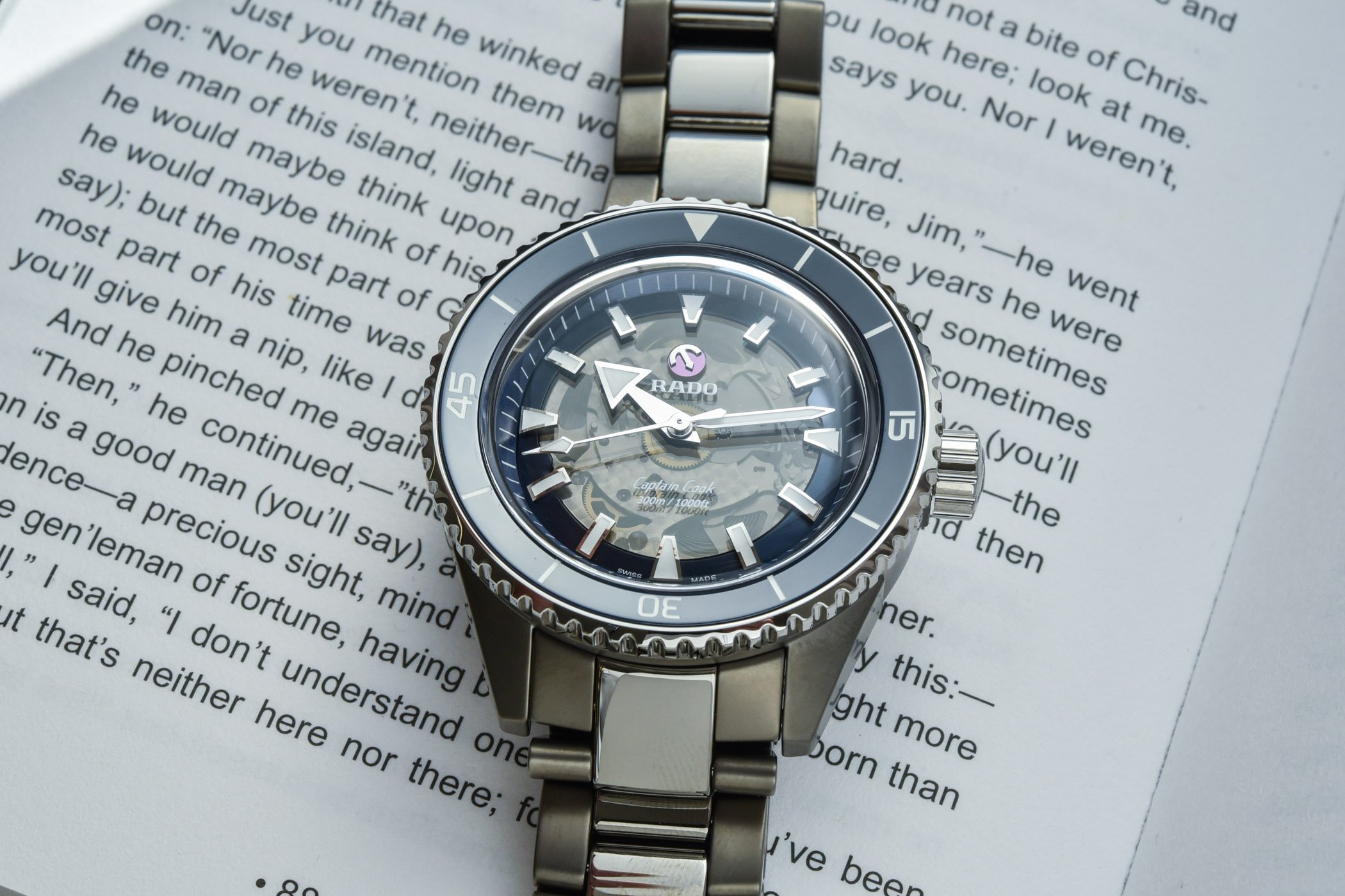
Since its introduction in 2017, the Captain Cook collection has become an important pillar for Rado. This vintage-oriented model was the answer of the brand to the demand for sporty, cool watches. If Rado benefits from a rich history, and several emblematic watches from the past, there was one area of the brand’s expertise that was somehow not used to its maximum yet with this collection. Know as the “Master of Materials,” Rado has somehow managed to bring ceramic to traditional watchmaking on a larger scale. And today, its successful vintage-oriented dive watch gets the full ceramic touch. Here are the 4 new Rado Captain Cook High-Tech Ceramic watches, in the metal.
Background
As previously explained, the modern Captain Cook collection is inspired by a glorious and quite conspicuous watch produced by the brand during the golden age of the dive watch. This watch was released in 1962 with a 37mm case and named after the British explorer, Captain Cook. While technically classic (automatic movement, 220m water-resistance, time-and-date display, 60-min diving bezel), the design really sets this model apart. It featured an original combination of curved shapes, with a bowl-shaped, concave inward-sloping bezel with a domed crystal and a domed dial. The dial stood out with its brushed grey surface, large painted indexes and arrow-shaped minute hand. Finally, a small detail of importance, there was a rotating anchor logo positioned at 12 o’clock – a sort of pendulum to animate the dial.
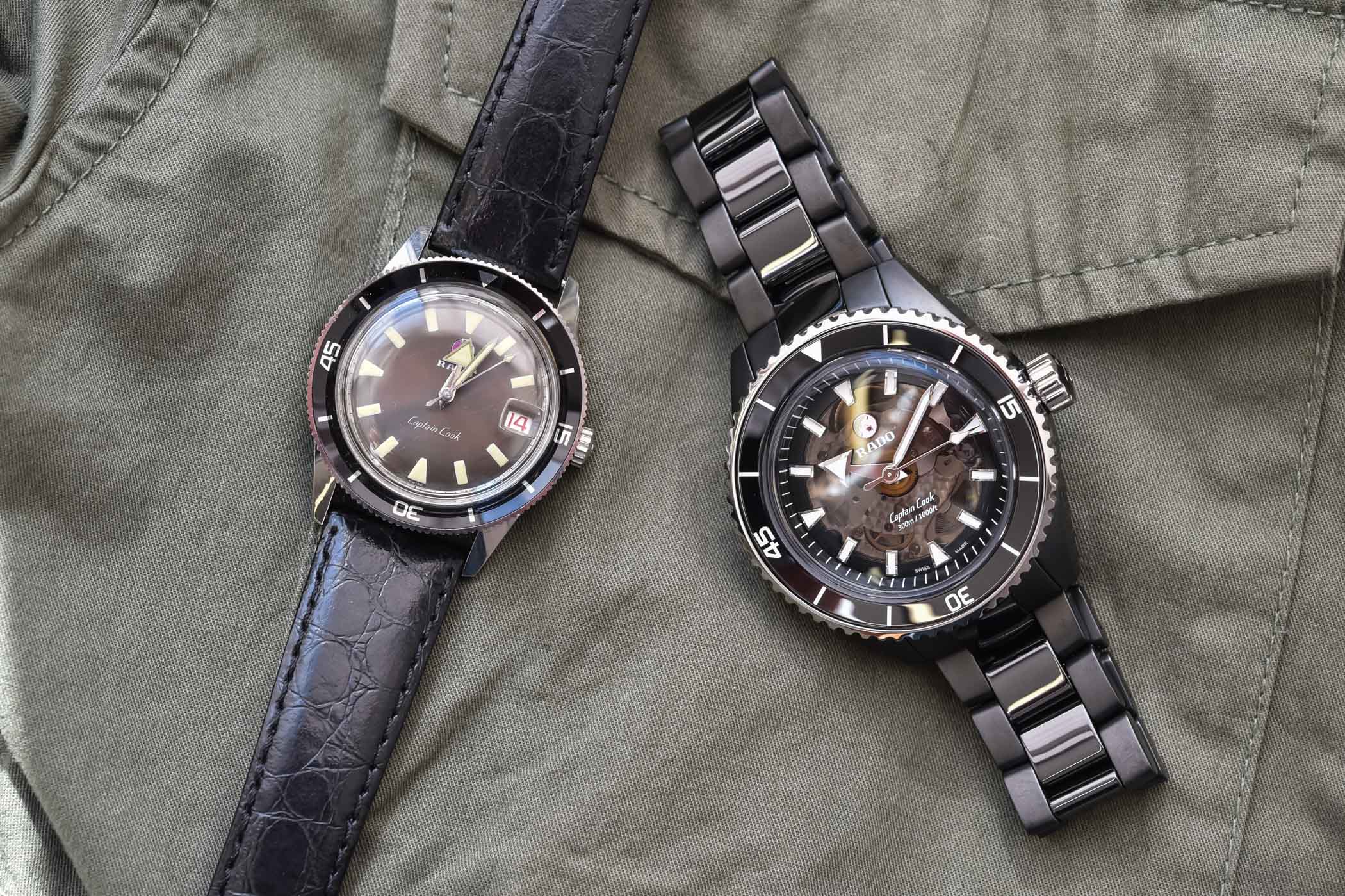
Until now, the modern version of the Rado Captain Cook has been released in an array of models, including cool and compact 37mm editions, larger and modern 42mm versions – both of them in stainless steel – and a series of bronze 42mm models, including this recently-launched burgundy version. What’s important to know also about Rado is how it has made ceramic cool and more accessible, with its proprietary high-tech ceramic, ultra-light high-tech ceramic, colourful high-tech ceramic and Ceramos materials. Up until now, ceramic was only used for the bezels of these Captain Cook but the brand has decided that its expertise in this field should be applied to the whole watch.
The new Rado Captain Cook High-Tech Ceramic collection
Without surprise, the brand here gives its star dive watch an interesting mix between emblematic elements from the past and its cutting-edge technologies with the use of high-tech ceramic. And there’s more to this collection than just a different material.
First, this new Captain Cook High-Tech Ceramic collection introduces an unprecedented case size. Available in 37mm (steel only) and 42mm editions (for the steel and bronze models), these new ceramic editions are presented in a slightly enlarged case of 43mm in diameter, 14.6mm in height and 49.8mm lug-to-lug – maybe impressive at first, but the case is very well designed and this measurement is neglectable once on the wrist, with lugs positioned low and with a curved profile.
The main evolution concerns all the materials used for the case. First of all, the centre case is a monoblock construction and made from matte black or matte plasma (the grey edition) ceramic. Lightweight, scratch-resistant and hypoallergenic, ceramic is here combined with contrasting elements for the bezel and the crown, made in gold PVD coated stainless steel or hardened stainless steel. As you’d expect, the bezel’s insert is still made of polished black or blue ceramic. The caseback, which has a black-tinted sapphire window, is made of brushed titanium.
Altogether, there are 4 versions of the Rado Captain Cook High-Tech Ceramic presented. The first one, ref. R32127162, has a matte black ceramic case, a rose gold PVD coated stainless steel bezel and crown and a matte and polished black ceramic bracelet. Gold coloured elements are also found on the dial. Second is the ref. R32127152, which is almost identical but with its contrasting elements being hardened polished stainless steel or rhodium-plated. It is also worn on a matte and polished black ceramic bracelet. The ref. R32127156 is basically the same watch as mentioned before, yet worn a black rubber strap. Finally, the most distinctive of all 4 watches is the reference R32128202, which is housed in a plasma ceramic case with a dark grey colour. It features contrasting elements in hardened polished stainless steel, and it comes with a blue bezel and accents on the dial. It is worn on a matte and polished plasma ceramic bracelet.
Important to note, despite the evolutions in materials, the overall design and specifications of the Captain Cook have been respected. For instance, we’re still talking about a real diver’s watch with a screw-down crown and 300m water-resistance. As for the design, the emblematic shape mixing convex and concave surfaces, as well as the ultra-domed yet recessed sapphire crystal have been retained. Overall, the watch is very neatly executed, with precise adjustment and a pleasant feeling of solidity, despite the relative lightness of the case – specifically when worn on a rubber strap, as the ceramic bracelet adds to the weight.
Compared to the steel or bronze editions, there’s another noticeable update, and that’s the dial and the way it is built. Instead of a plain baseplate, Rado has decided to give Captain Cook High-Tech Ceramic a translucent black-tinted
sapphire dial, partially revealing the movement underneath. If the central part is now smoked-coloured, the rest of the dial – the hands, the applied indexes, the inner flange – are identical to the steel editions. And, because this part is a definitive element of the Captain Cook, Rado has kept the moving anchor symbol with a synthetic ruby plate positioned at 12 o’clock.
The combination of materials, shapes, partially transparent, matte or polished parts, all of that brings an incredible sense of depth to this new Captain Cook High-Tech Ceramic. The watch is lively, intriguing and there are plenty of details to discover. A good point is that despite the multitude of surfaces and the partial view on the movement, the legibility of the watch remains great, both night and day.
The back of the watch reveals the calibre R734. This automatic movement is the brand’s version of Swatch Group’s Powermatic, a strong evolution of the ETA 2824-2 that is meant to become the new standard engine of the Group and to offer a serious competitive advantage in this highly competitive price range. Thanks to a reworked kinetic chain and a lower frequency of 3Hz, the power reserve is boosted to 80 hours. Also, it features a Nivachron hairspring, which provides an advantage in everyday life by protecting the timepiece from magnetic fields.
Depending on the editions, the watch is worn on a 3-link matte and polished black or plasma ceramic bracelet, equipped with a titanium 3-fold clasp with high-tech ceramic openers. One of the editions is worn on a textured and well-integrated rubber strap with stainless steel extendable folding clasp and black high-tech ceramic cover.
Availability & Price
The Rado Captain Cook High-Tech Ceramic collection is launched today and can already be ordered on the brand’s website (depending on the markets). It will be priced from CHF 3,300 (black ceramic, rubber) to CHF 3,800 (plasma ceramic).
More details and orders at www.rado.com.

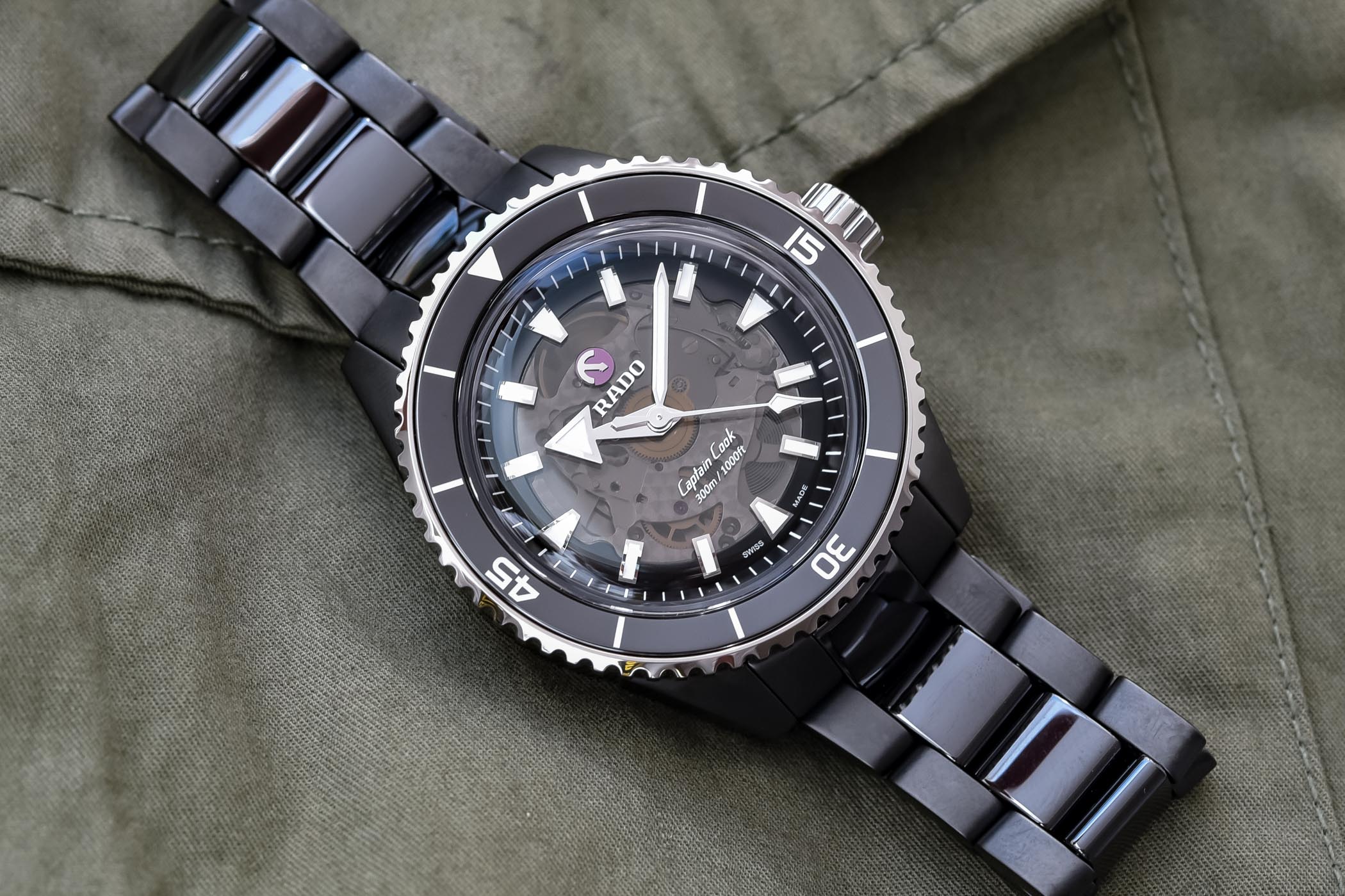
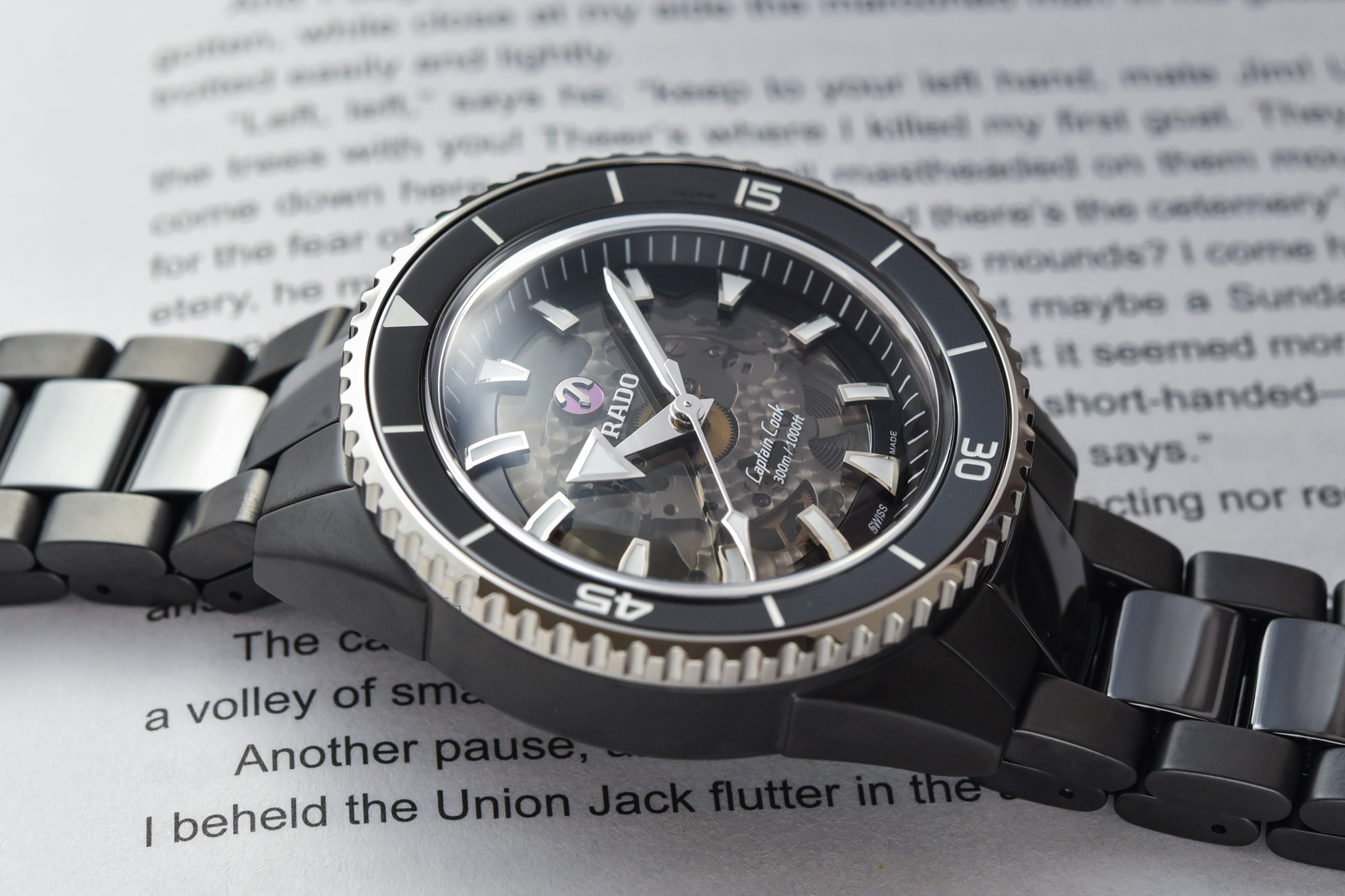
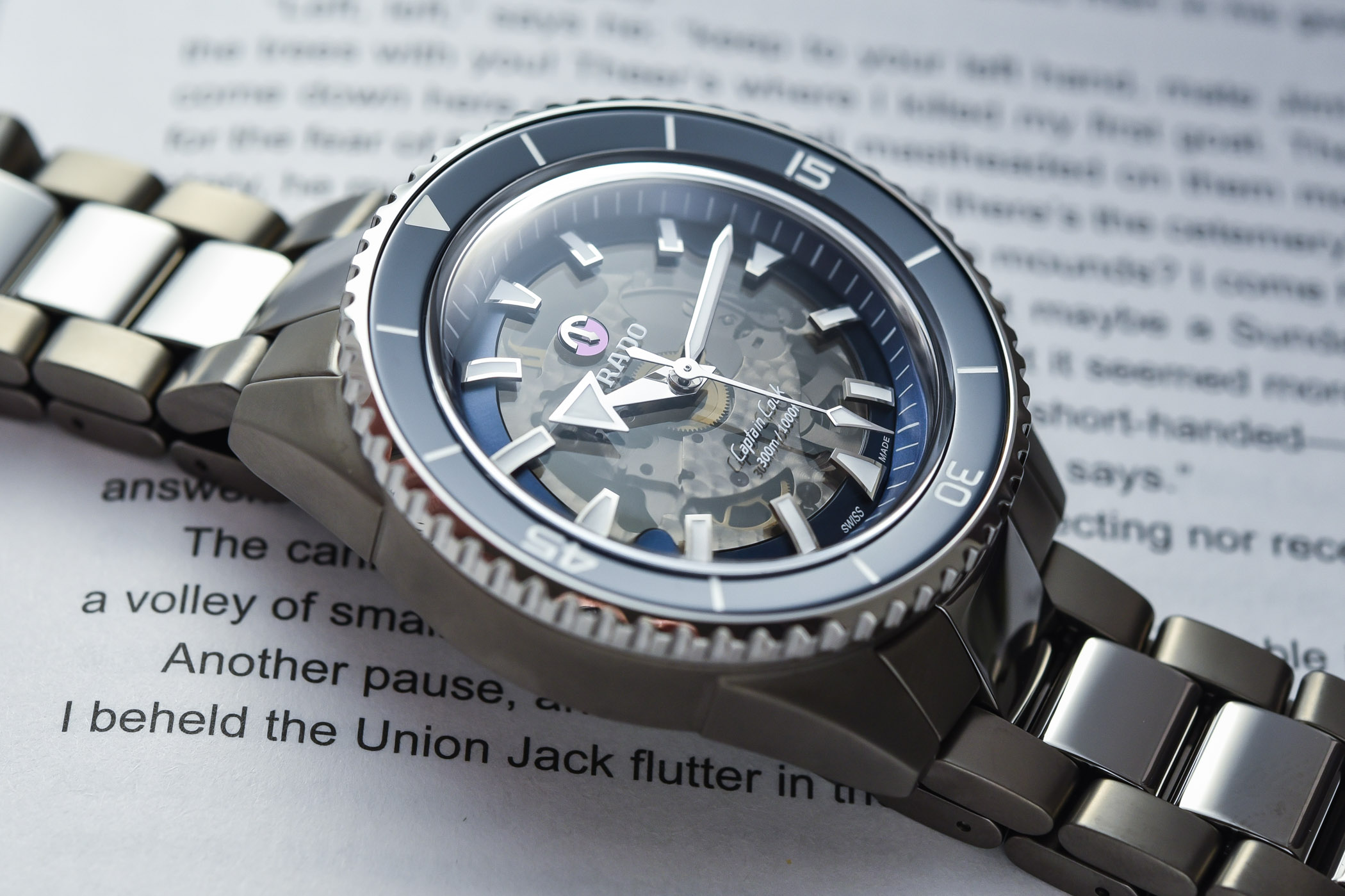
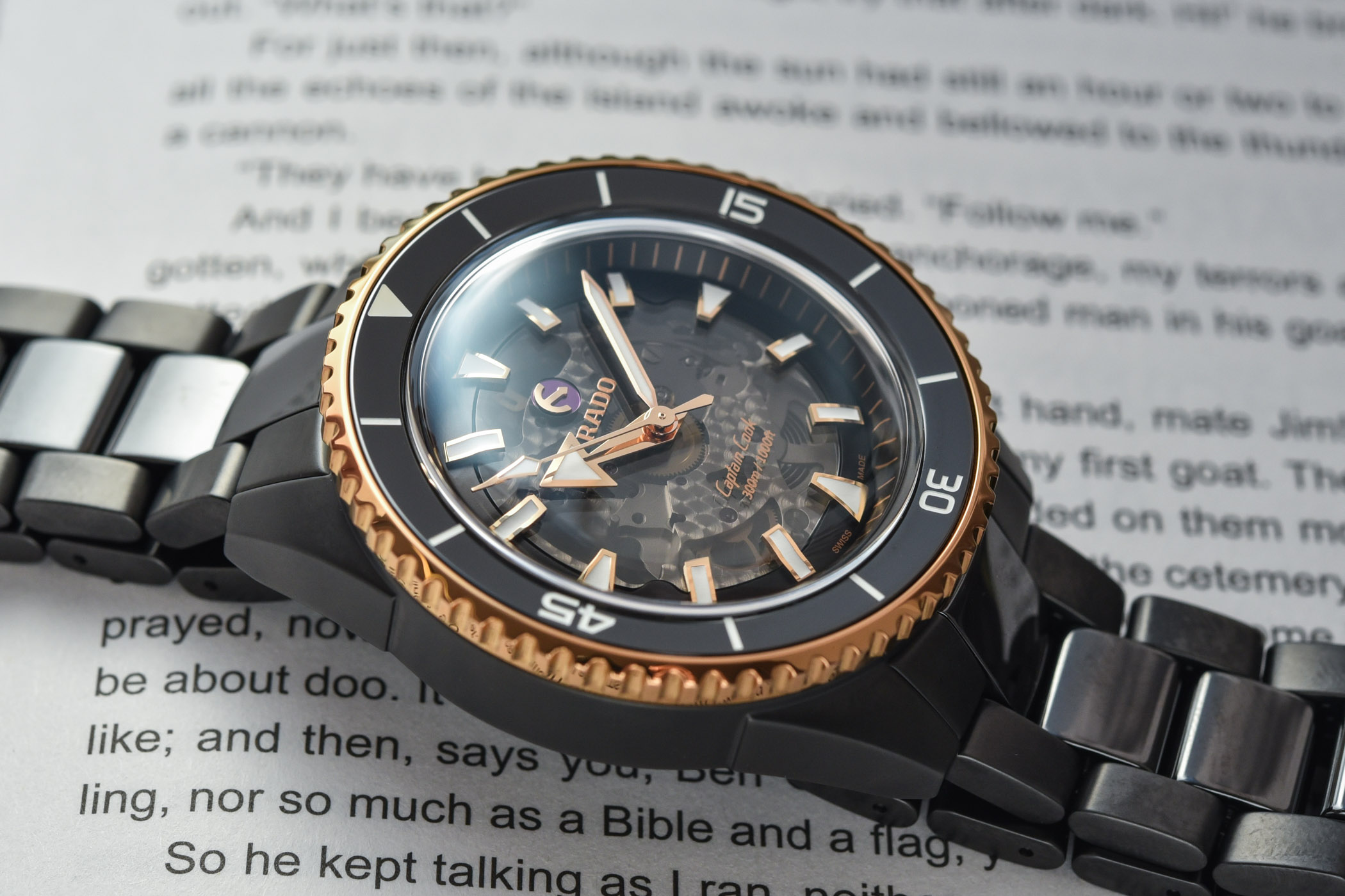
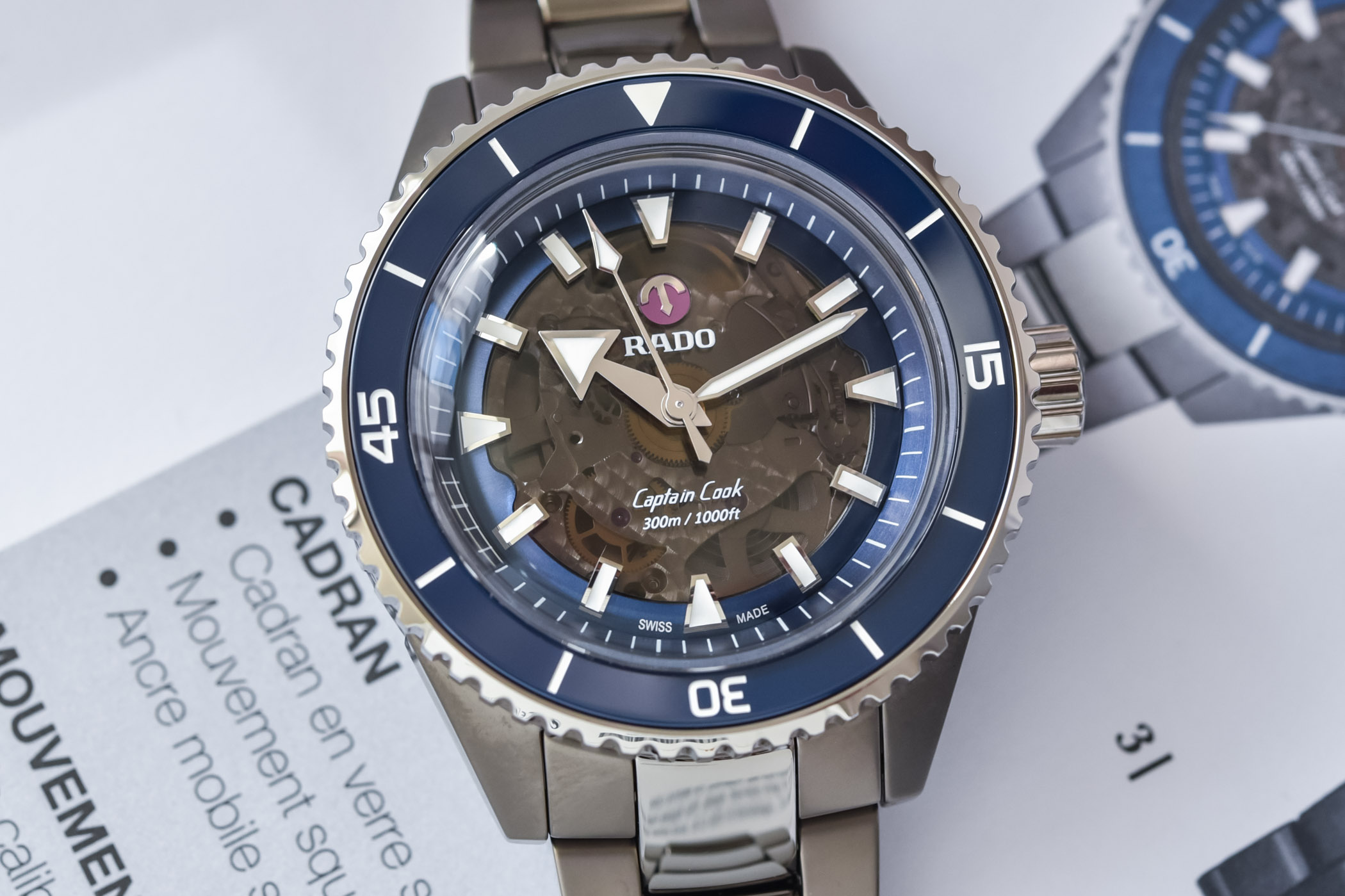
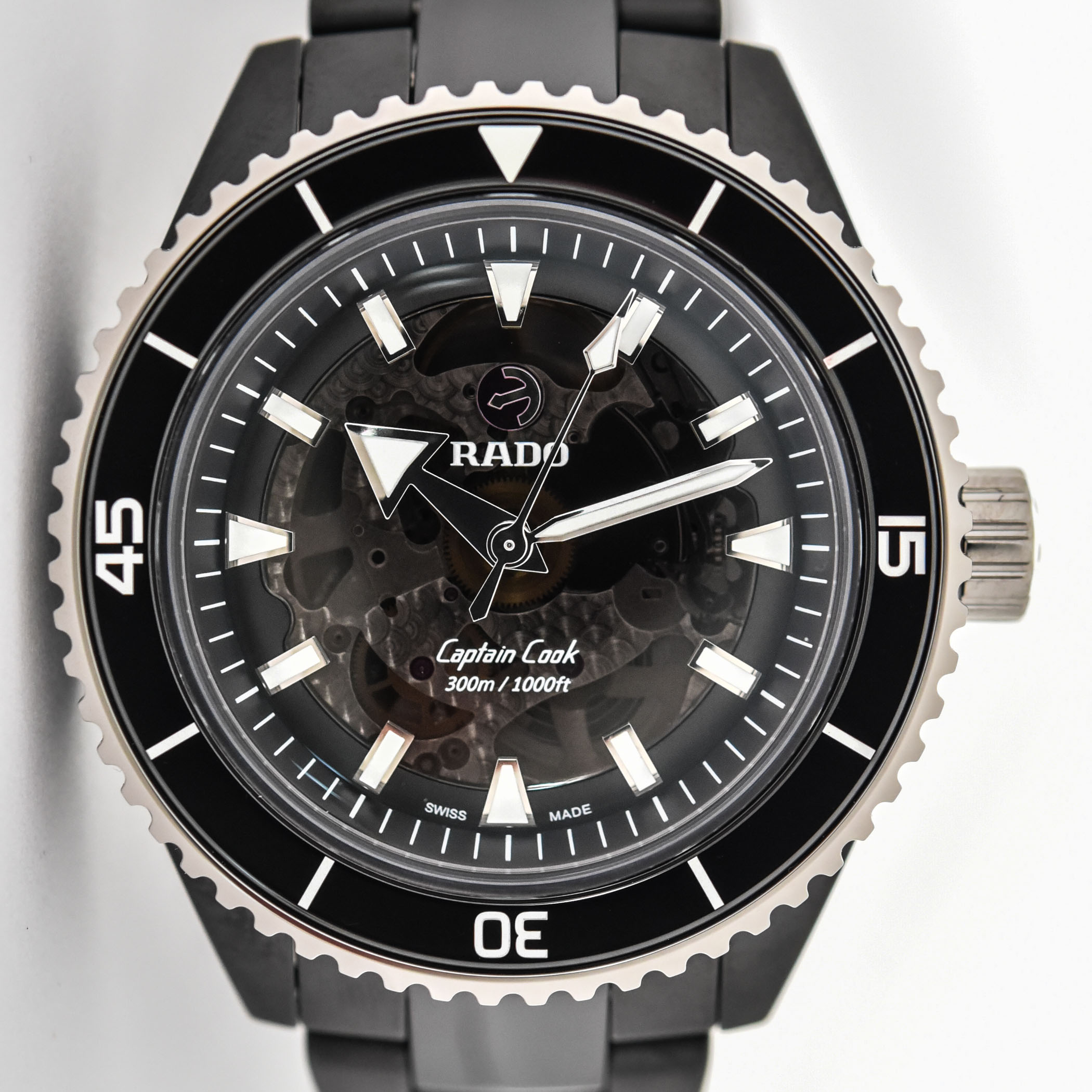
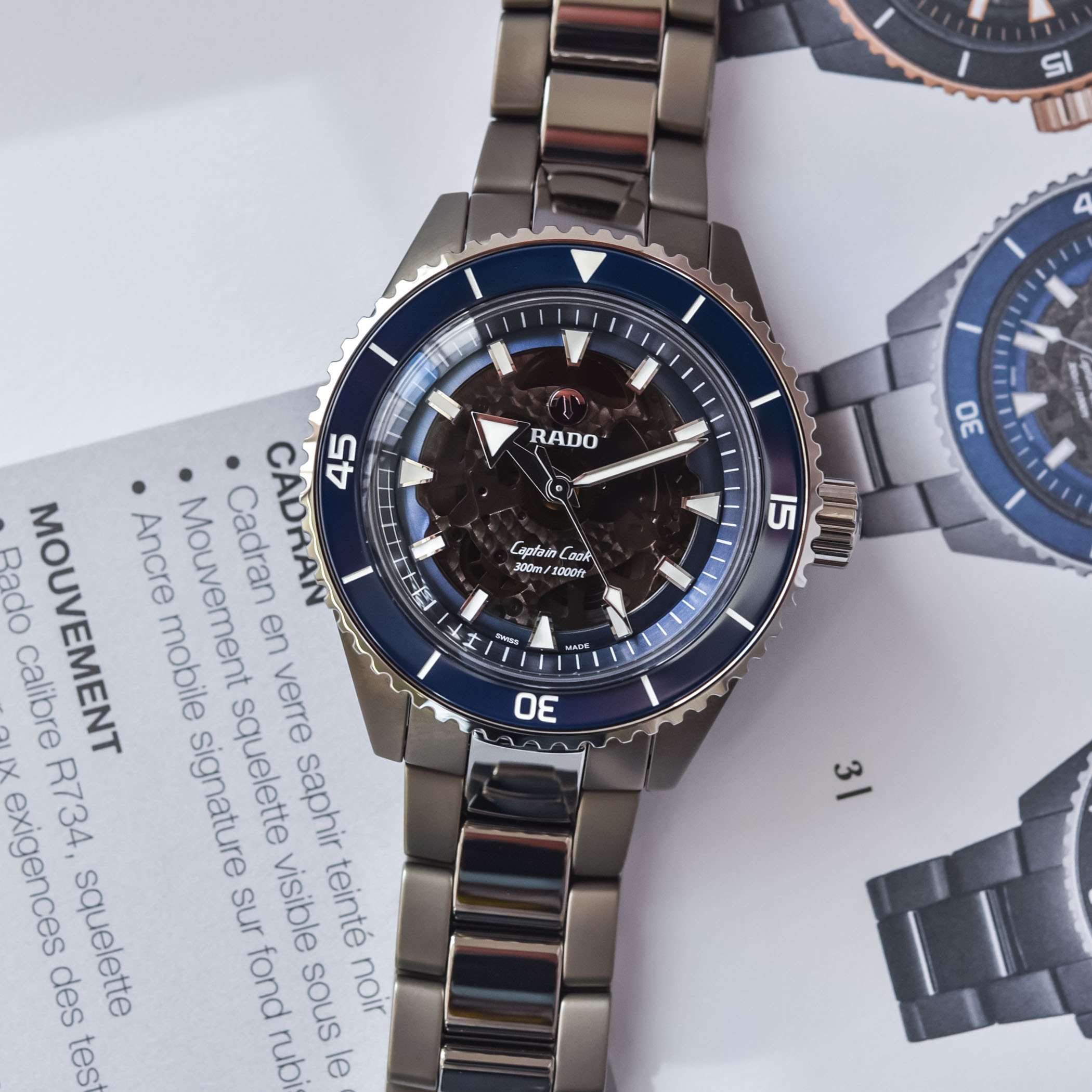
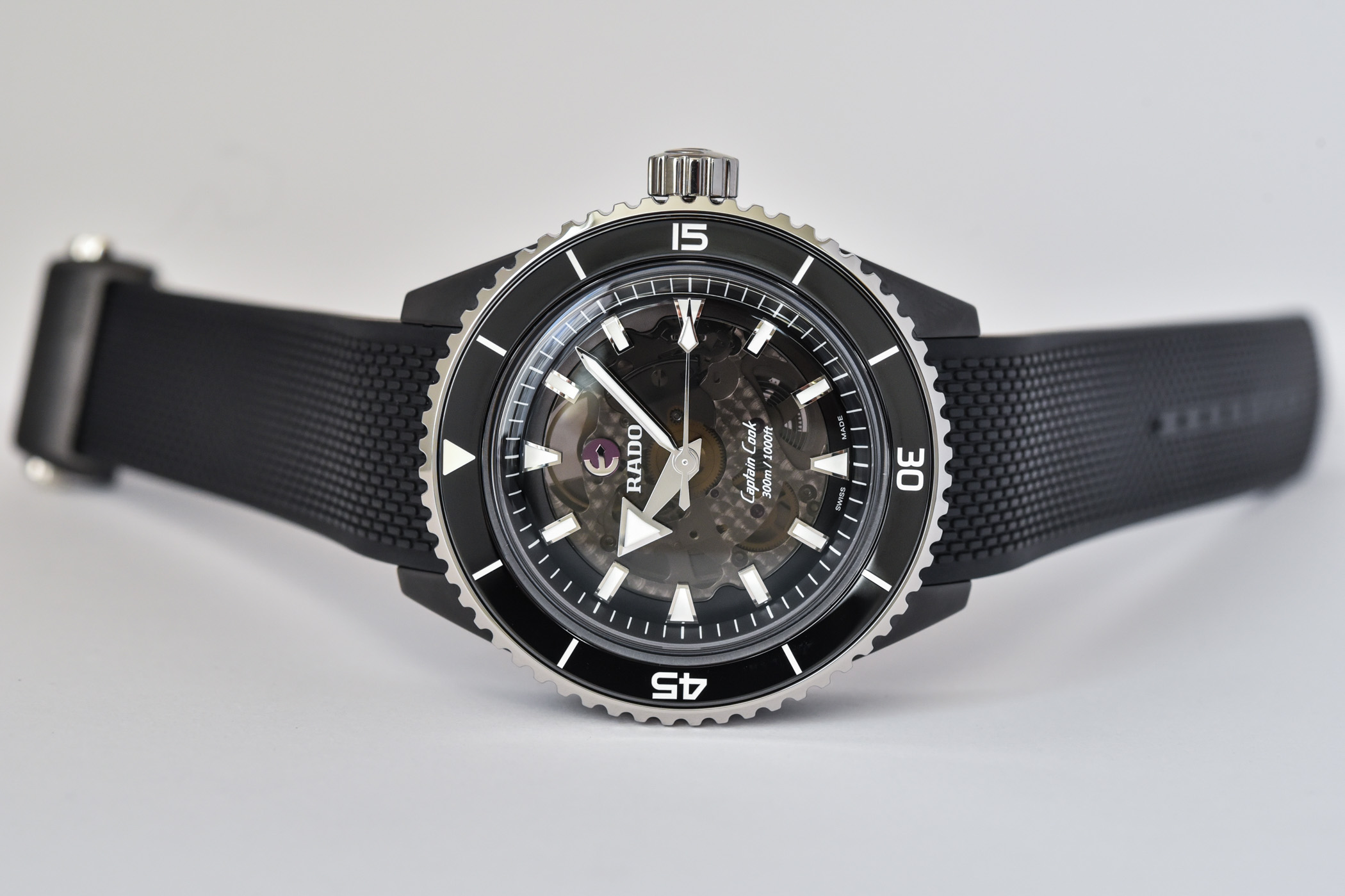
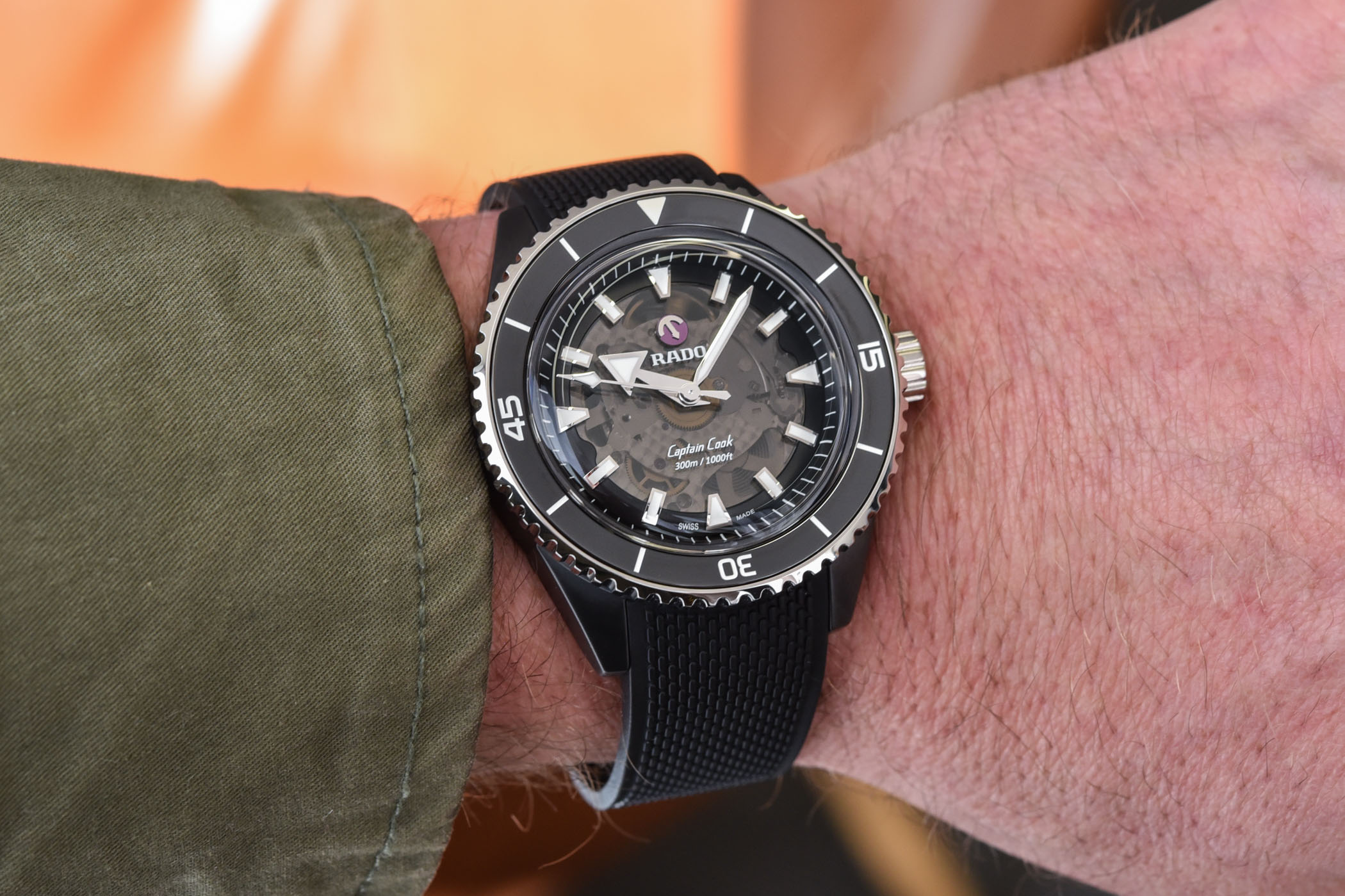
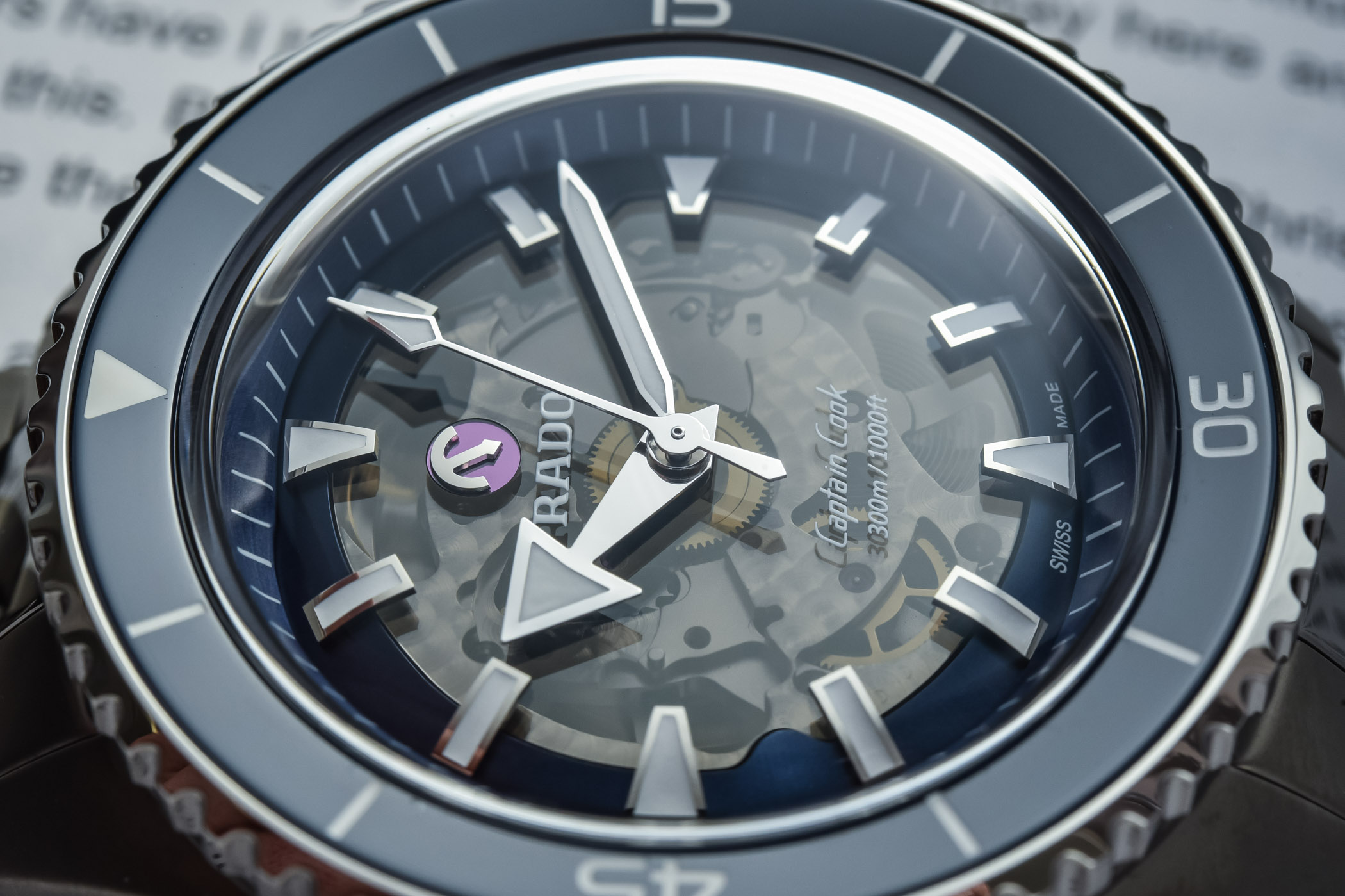
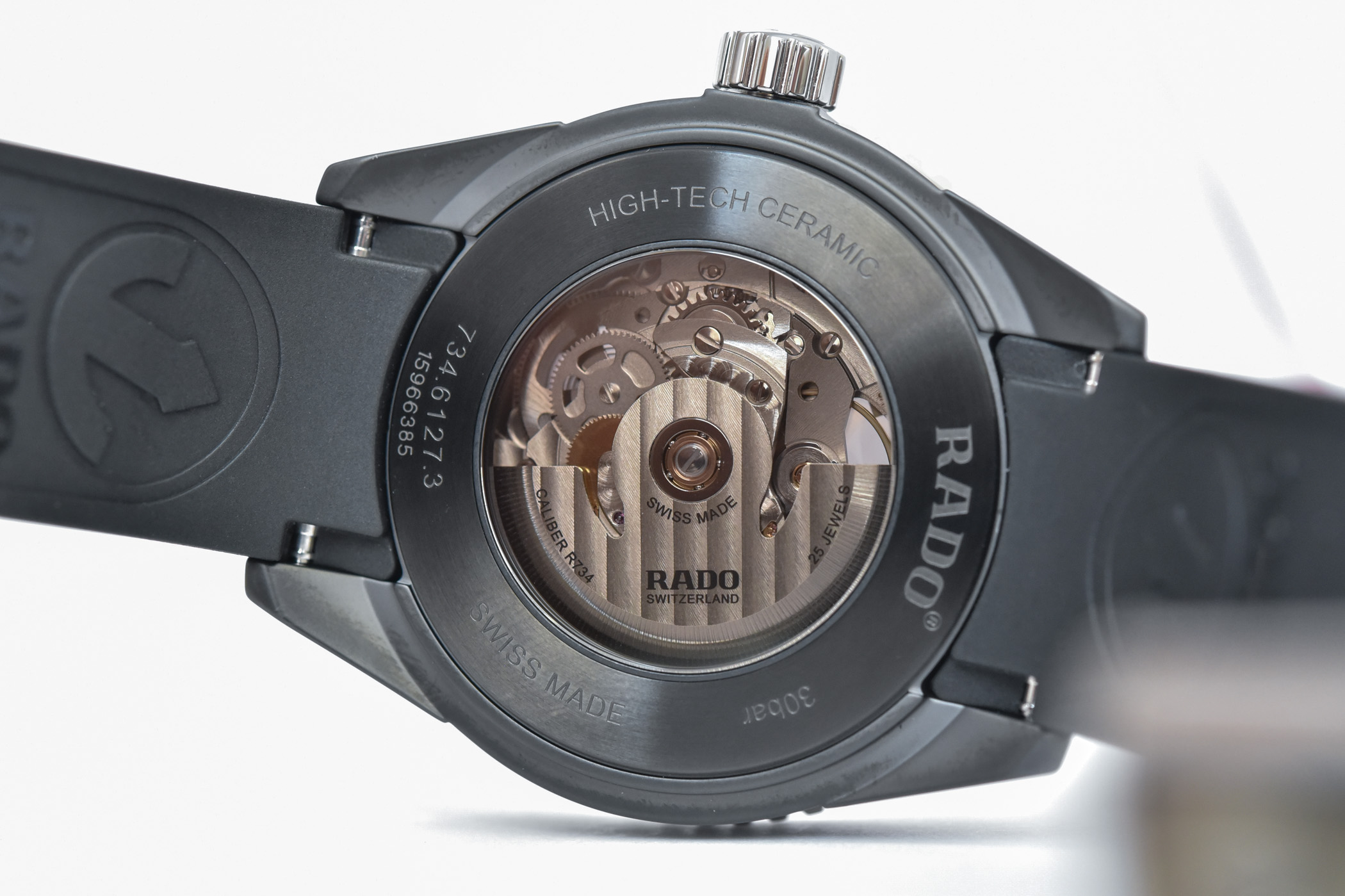
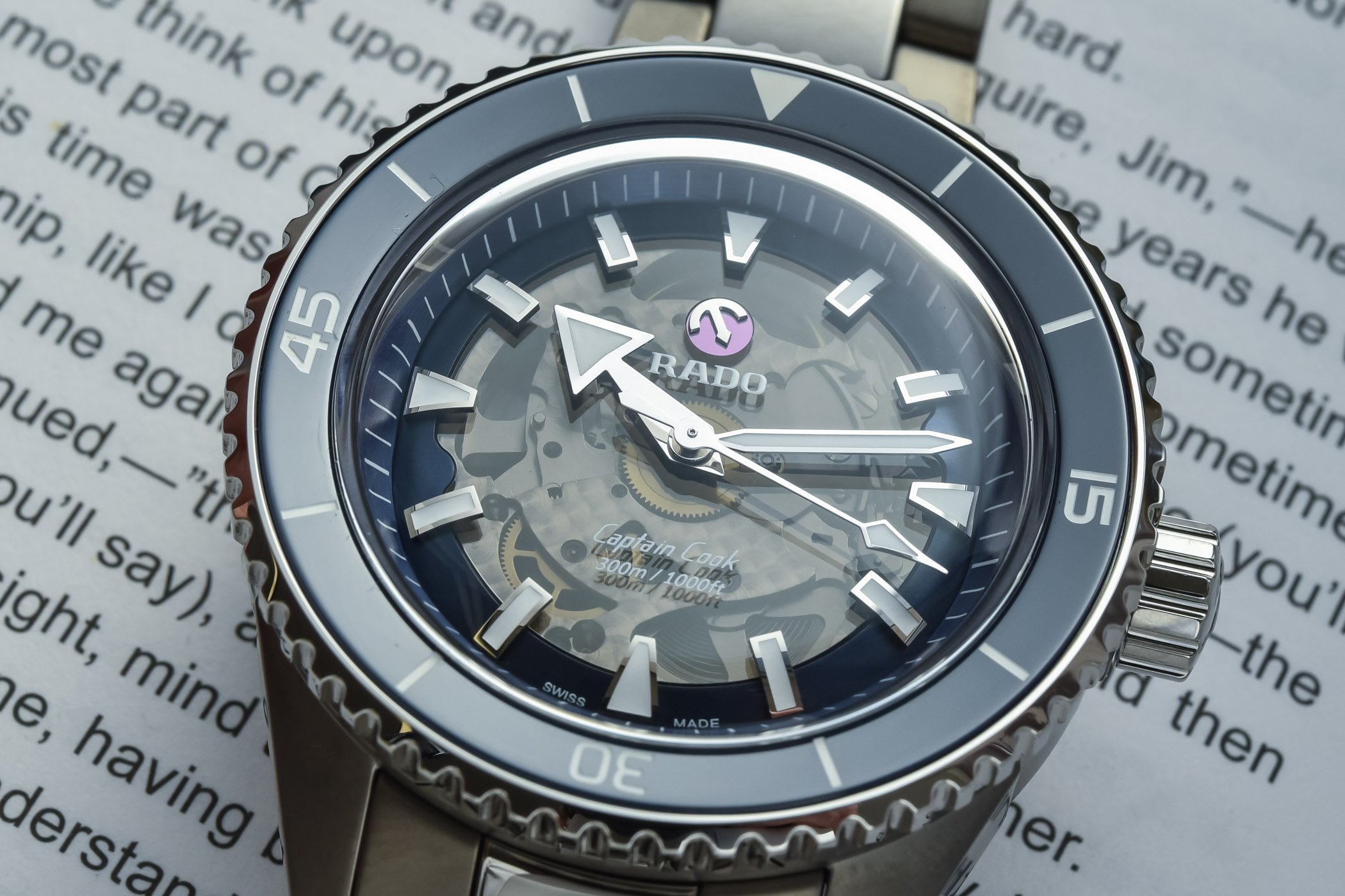



2 responses
Great looking watch with an unusual dial. One “fun fact”, the rotating anchor logo on the dial used to be used as a service indicator by Rado in the 1960s and 1970s. As stated in the article it is mounted on a synthetic ruby crystal like other moving parts in the watch movement. When it ceased to rotate as it should it was a sign that the movement needed to be serviced and lubricated.
@SPR – thanks for that. We were not aware. If that’s the case, it’s pretty cool indeed!